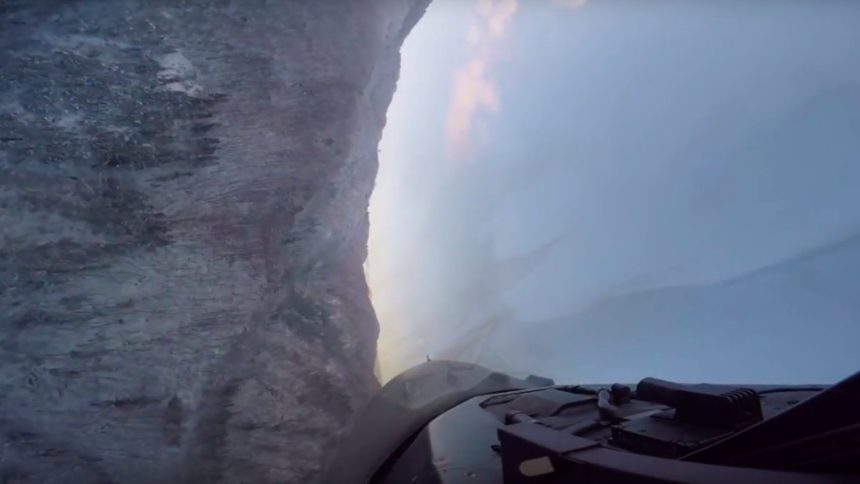An amazing video shows what it’s like to fly at ultra-low altitude over Japan. Is this kind of training is still relevant?
The footage you can find below was just released by the 35th Fighter Wing. It shows a low-level sortie flown by an F-16 out of Misawa Air Base, located some 400 miles north of Tokyo, in the northern part of the island of Honshū of Japan.
The clip is quite amazing. Take a look.
Low level flying remains a key part of military pilots training. Although most/many current war scenarios involve higher altitudes, fighter jocks still practice at low altitudes to infiltrate heavily defended targets and to evade from areas protected by sophisticated air defense networks. While electronic countermeasures and stand-off weapons help, the ability to get bombs on target and live to fight again may also depend on the skills practiced by pilots in the low-level areas across the world, such as the famous “Mach Loop” in the UK or the “Star Wars Canyon/Jedi Transition” in the U.S.
During normal training activities, flying lower than 2,000 feet can be useful when weather conditions are such to require a low-level leg to keep visual contact with the ground and VMC (Visual Meteorological Conditions). However, it’s when they are committed to the real stuff, including special operations, reconnaissance, Search And Rescue, troops or humanitarian airdrops in troubled spots around the world, that pilots may need to fly at ultra-low altitudes to prevent detection or to survive an engagement by enemy fighter planes or missiles.
For instance, low level training was particularly useful to RAF C-130 Hercules aircrews who were tasked to rescue British oil workers who were trapped in Libya in 2011 during the initial stages of the uprising: two cargo aircraft took off from Malta and flew over the Mediterranean, called Tripoli air traffic control, explained who they were and what they were up to. However, they got no reply from the controllers, therefore continued in what could be considered “hostile air space”, descending at ultra-low level at night, to avoid eventual Libyan Air Force interceptors. Once all the oil workers were picked up (in more than one location) from the desert, the Hercules returned to Malta keeping a low-altitude profile until they reached a safe airspace, “feet wet” over the Mediterranean Sea.
This what an Italian Air Force Tornado IDS Nav (equivalent to a Weapons System Officer) explained to us in a recent interview:
In theatre [Afghanistan or Iraq], we normally operate at higher altitudes. However, even in the most complex scenarios, flying low remains an option when you need to evade threats. Even more so when you fly the Tornado, an aircraft that has been designed to fly at treetop altitude: terrain masking is an option you can rely on. This is the reason why most of our training takes place at low altitudes. In the past, our low flying training took place in Italy, then, for a certain period, we have deployed to Goose Bay, in Canada; more recently we have exploited the deployments to Israel to fly as low as 250 feet during multinational exercises.









